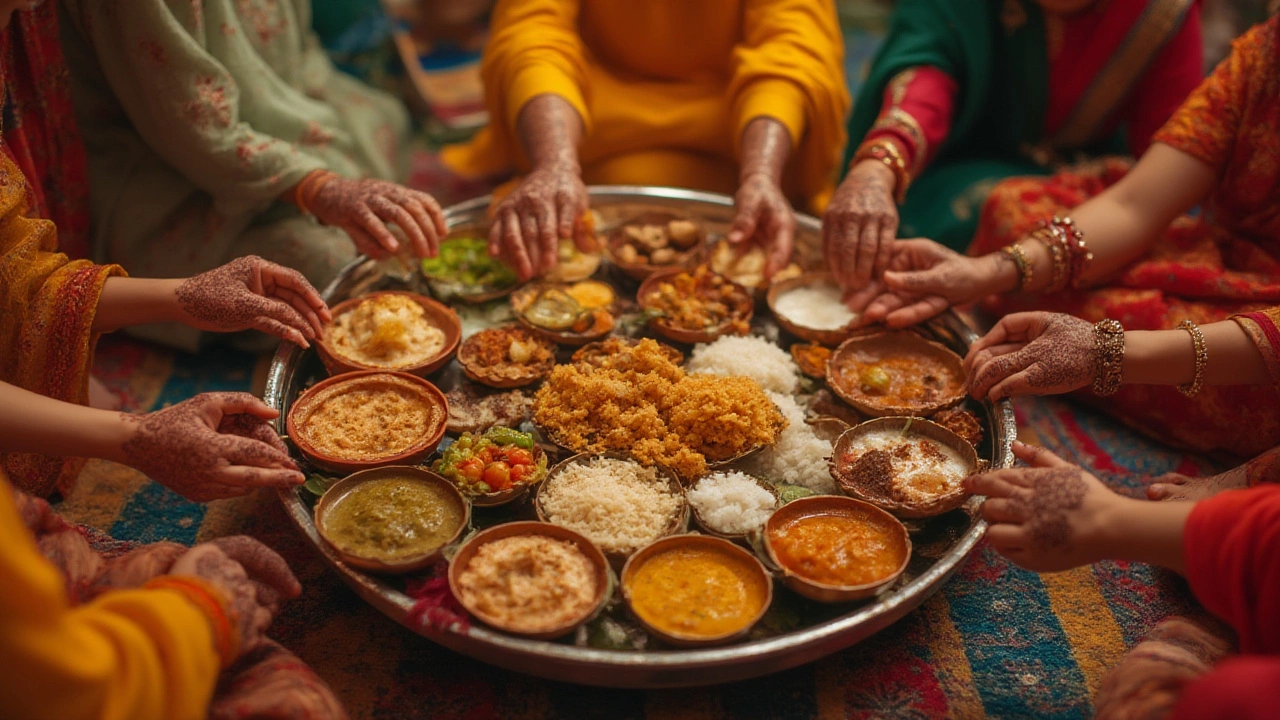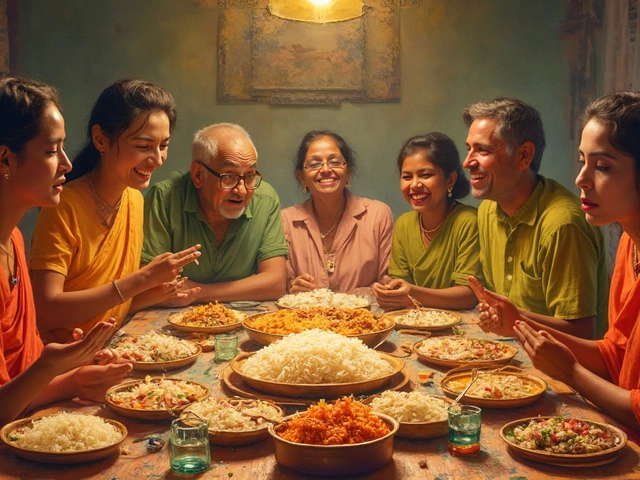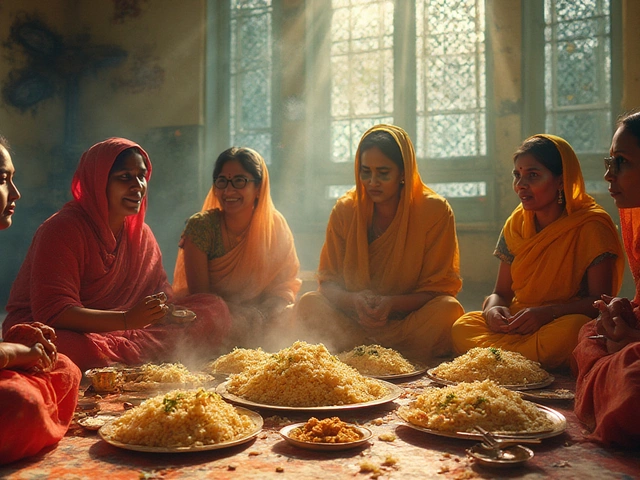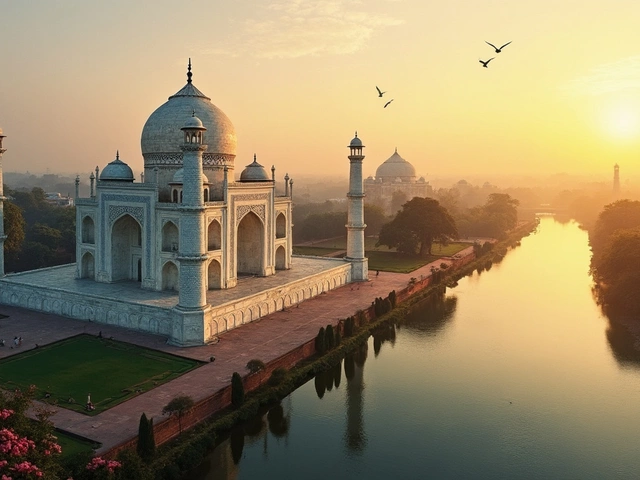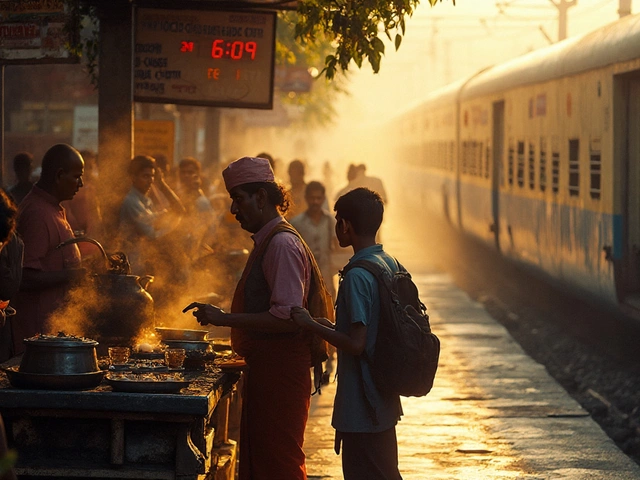If you walk into a typical Gujarati home around lunchtime, you’ll probably be hit with a curious blend of sweet, salty, and spicy aromas. It’s unmistakable, it’s vibrant, and it says one thing loudly: here, food is more than just fuel. It’s a way of living, a rhythm that echoes through the lanes of towns both small and mighty. In Gujarat, food isn’t hidden away in restaurant kitchens or reserved for festivals. Instead, it’s something proudly displayed on every family’s thali and discussed over tea in every street-side tapri. So, what’s the main food habit in a land that loves its dance as much as its dal? Let’s break it down.
Vegetarian Foundations and The Gujarati Thali
Ask someone anywhere in India about Gujarati food and you’ll rarely hear about chicken or mutton. Gujarat is known for its firmly rooted vegetarian tradition. The vast majority of Gujaratis, whether swayed by Jain, Hindu, or Vaishnav customs, stick to plant-based diets. This isn’t some accidental trend—religion and history have shaped it. Traditionally, Gujarat’s geography made livestock rare and, coupled with strong religious codes, made vegetarianism the favored route for families for generations.
The star of the show is the Gujarati thali. If you ever get invited to a Gujarati wedding or festival, keep an empty stomach because this thali pulls out all the stops. It’s not a single dish, but a meal with several small servings that come together to make a mosaic of flavors. Typically, a thali will include various shaak (vegetable curries), dal (lentil soup), rice, roti or puri (types of bread), farsan (snacks like dhokla or khandvi), and at least two to three chutneys. Where else do you get to try a dozen flavors in one meal?
One thing that might surprise you: a pinch of sweetness sneaks into even the spiciest curries. A tiny bit of jaggery or sugar brings a gentle sweet note, balancing out the salt and tangy spices. People often argue about this trait—is it genius or unnecessary? But taste a bite of sev tameta nu shaak (tomato curry with chickpea noodles) or undhiyu (vegetable medley cooked in earthen pots), and it makes sense. Sweet, spicy, tangy—it all jostles together without stepping on each other’s toes.
Another peculiarity? Farsan is served alongside lunch or dinner, not just as snacks. Imagine munching on crispy khandvi or steamed muthia right alongside your main course. It’s not just about taste, but about texture and tradition. The idea is to make every meal a little celebration, even if it’s an ordinary Tuesday afternoon.
Milk and dairy have their own seat at the table. Curd, chaas (buttermilk), paneer, and ghee are respected daily regulars. For a region with a history of dry spells and scant rainfall, dairy has been both a nutrition source and a palate cleanser. No meal is ever too spicy, too greasy, or too heavy when chased with a gulp of chilled chaas.
And speaking of chasing—Gujaratis love to end their meals on a sweet note, not just during festivals. Whether it’s shrikhand (sweetened yogurt), basundi (milk dessert), or lapsi (wheat porridge with ghee and jaggery), desserts don’t play hard to get. Most local homes whip them up as quickly as a batch of thepla for tea. In fact, the tradition of making mithai (sweets) runs so deep that every town has its own specialty—Surat’s ghari, Rajkot’s peda, or Ahmedabad’s sutarfeni, for example.
If you’re a guest, get used to being offered second and third helpings even when you’re full. Pushing food is a show of affection, not pressure: “Accha, ek aur thepla le lo!” Expect this chorus in every Gujarati home.
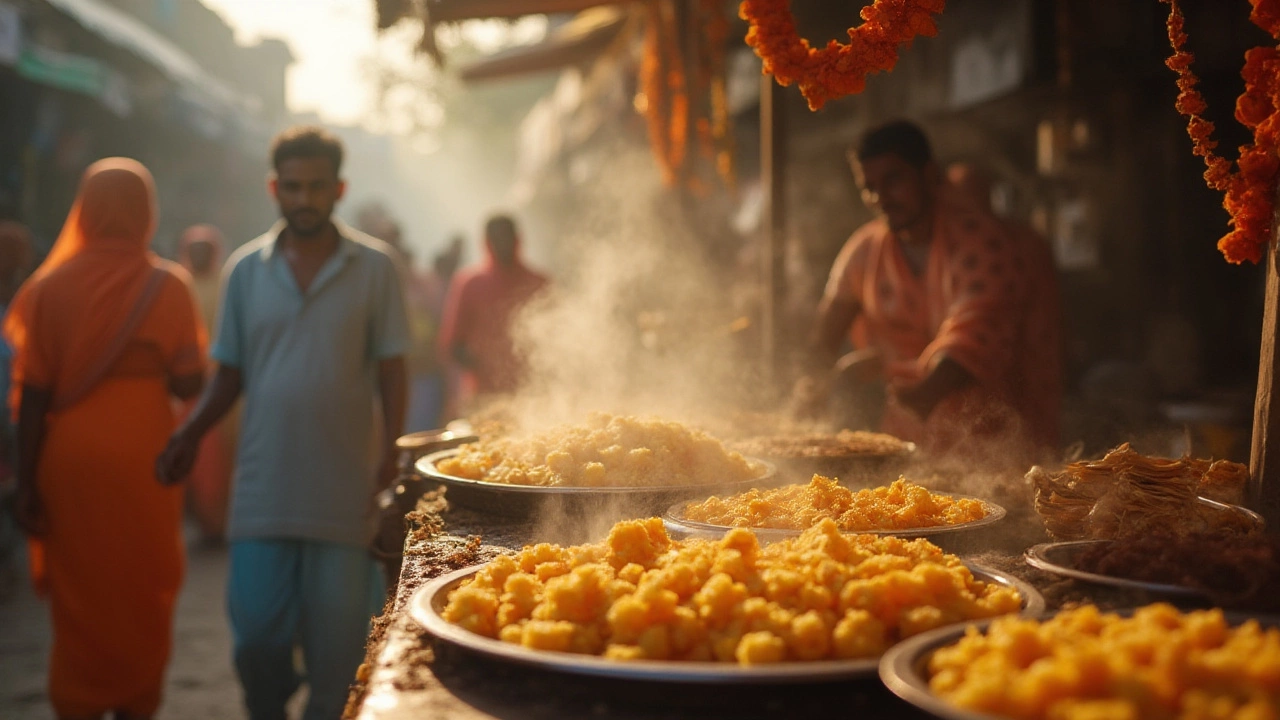
Regional Variations and Street Food Staples
Of course, Gujarat is more than just a monolithic land of dal and rotis. Its varied landscape, stretching from the arid Kutch to the lush South, means every few hundred kilometers, the food twists and adapts. In Kutch, meals are often a bit drier—think bajra rotla with garlic chutney and onions, resilient and filling for pastoral life. Walk south toward Surat, and suddenly food turns richer, spicier, and street stalls brim with Surti locho, undhiyu, and the unforgettable khaman that’s so soft it barely holds together.
Street food isn’t just something teens swoop down on after school; it’s part of daily life. The evening chatpata scene unfolds with vendors pushing carts filled with sev usal, dalwada, handvo, and fafda served with raw papaya chutney. Ever heard of khakhra? These crispy, roasted wheat crackers are the Gujarati answer to potato chips, only healthier and always ready on every shelf. People pack them for travel, send them to their kids in college, and dip them in tea during breakfast. This isn’t just about sustenance—it’s nostalgia in edible form.
If you thought breakfast in Gujarat was simple, think again. The morning menu can jump from the classic thepla with pickle to a steaming plate of gathiya, or maybe bhakri smeared with homemade white butter. Each family swears by their secret masala recipe, whether for fafda or for the besan rolled into soft khandvi. Interestingly, the practice of “gharelu” (homemade) breakfasts remains strong, despite the dunk of fast-food chains and cafés. People love sharing these quick recipes: “Try mixing ajwain in your thepla dough, it helps with digestion!”
Certain communities add their own quirks. Jains in Gujarat are sticklers for ingredients—no onions, garlic, or root vegetables—and yet, their food never feels lacking. Kathiyawadis from Saurashtra like it hot and bold, often dousing their curries with red chili and garlic paste. Traveling in southern districts introduces Surti undhiyu or Ghari, which are special during festivals like Uttarayan (kite festival). It’s a real trip to go from the dry, nutty flavors in the north to the coconut-rich, spice-forward dishes in the south.
The monsoon adds another playful layer. As soon as the rains hit, people in Surat and Vadodara hunt down dalwada stalls. Crunchy, spicy, and usually served piping hot with green chilies, these lentil fritters are the mascot of rainy evenings. Each season brings its own food rituals—shravan month (monsoon) calls for fasting snacks, while winter glows with undhiyu and ponk (tender sorghum grains with spices), an unmissable treat unique to Surat.
Gujaratis are champions of making meals “travel-friendly.” Snacks like khakra, thepla, and dry bhakri fly into suitcases before long trips. It’s no joke—there are jokes about Gujaratis carrying their own food everywhere, including to foreign countries. But it’s not just about convenience. For many, these snacks are lifelines—a taste of comfort when you’re away from home. Eye-opening fact: Indian Railways once revealed that Gujarati travelers pack more home food than any other group. If you ever share a train coach with a Gujarati family on vacation, you’ll get your fill of thepla, pickles, and maybe a little life advice as well.
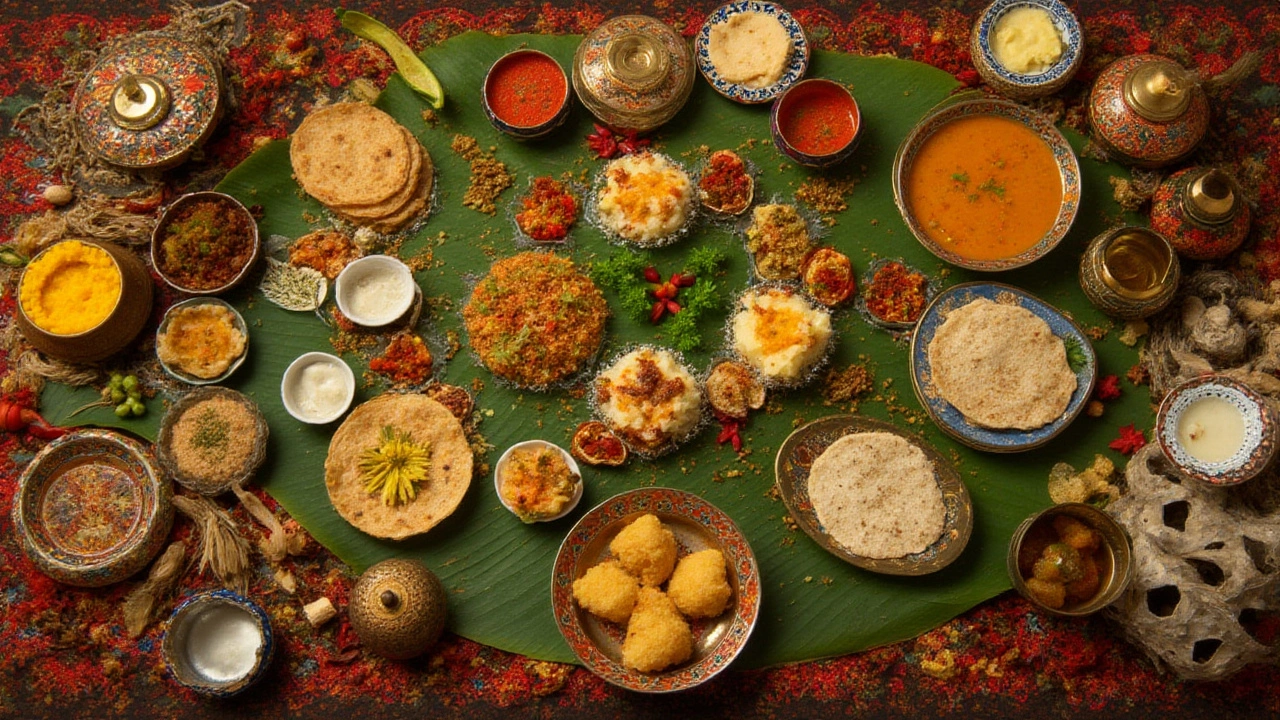
Food Customs and Changing Modern Habits
Sit down to eat in a Gujarati home, and you’ll notice there’s an order to the madness. Traditionally, food is served course by course, starting with farsan and ending with sweets or a cooling buttermilk. Plates are set on the floor or at a low table, and the whole family joins, young and old. Often, hands are used instead of utensils, not out of lack, but because it’s believed to connect you more closely to your food.
Hospitality is sacred in Gujarat. There’s a saying: “Athithi Devo Bhava”—the guest is God. Whenever someone drops by, out come tins of snacks and jugs of chaas. Even today, surprise visitors are common, and being ready with fresh snacks is a badge of honor for many Gujarati moms and grandmoms. People take “snacking culture” to new heights—a typical household stocks dabbas (steel tins) of sev, chevdo, papad, and home-pickled vegetables. These aren’t hidden away for holidays. They’re a daily fixture, offered any time guests wander in for a chat or chai.
The influence of commerce and industry is obvious in Gujarat. It’s a land famous for entrepreneurship, and you can see it in the snacks too—branded theplas, pre-packed undhiyu mixes, and vacuum-sealed khakra are everywhere, from Ahmedabad malls to international aisles in London. NRI Gujaratis often say that no matter where you go, a local Indian store will have at least one rack filled with their snacks. This food diaspora has spread far—so much so that you’ll find “Taste of Gujarat” food fests in New Jersey and dinner boxes for flight crews at Ahmedabad airport stuffed with dhokla and fafda.
The food landscape isn’t static, though. Modern lifestyles in cities like Surat and Ahmedabad mean that folks now balance traditional food with global trends. Youngsters chow down on pizza with a side of chutney or invent the now-viral “dhokla sandwich” for school tiffins. Jain, vegan, and “no onion, garlic” labels are everywhere in Gujarati restaurants—proof of just how flexible home cooks can be while sticking to their habits.
Despite all the changes, a few rules remain unbreakable. Never refuse home-cooked food. Never skip tea, which is almost always served sweet and milky. And never underestimate the power of a homemade pickle to lift up any boring meal. Even with the rising use of gadgets like air fryers or the international invasion on restaurant menus, the Gujarat food habits—built around family, simplicity, and hospitality—hold strong. If you want to really explore the spirit of Gujarat, don’t just see the sights. Eat the food, share a plate, and let the next batch of thepla win you over.
